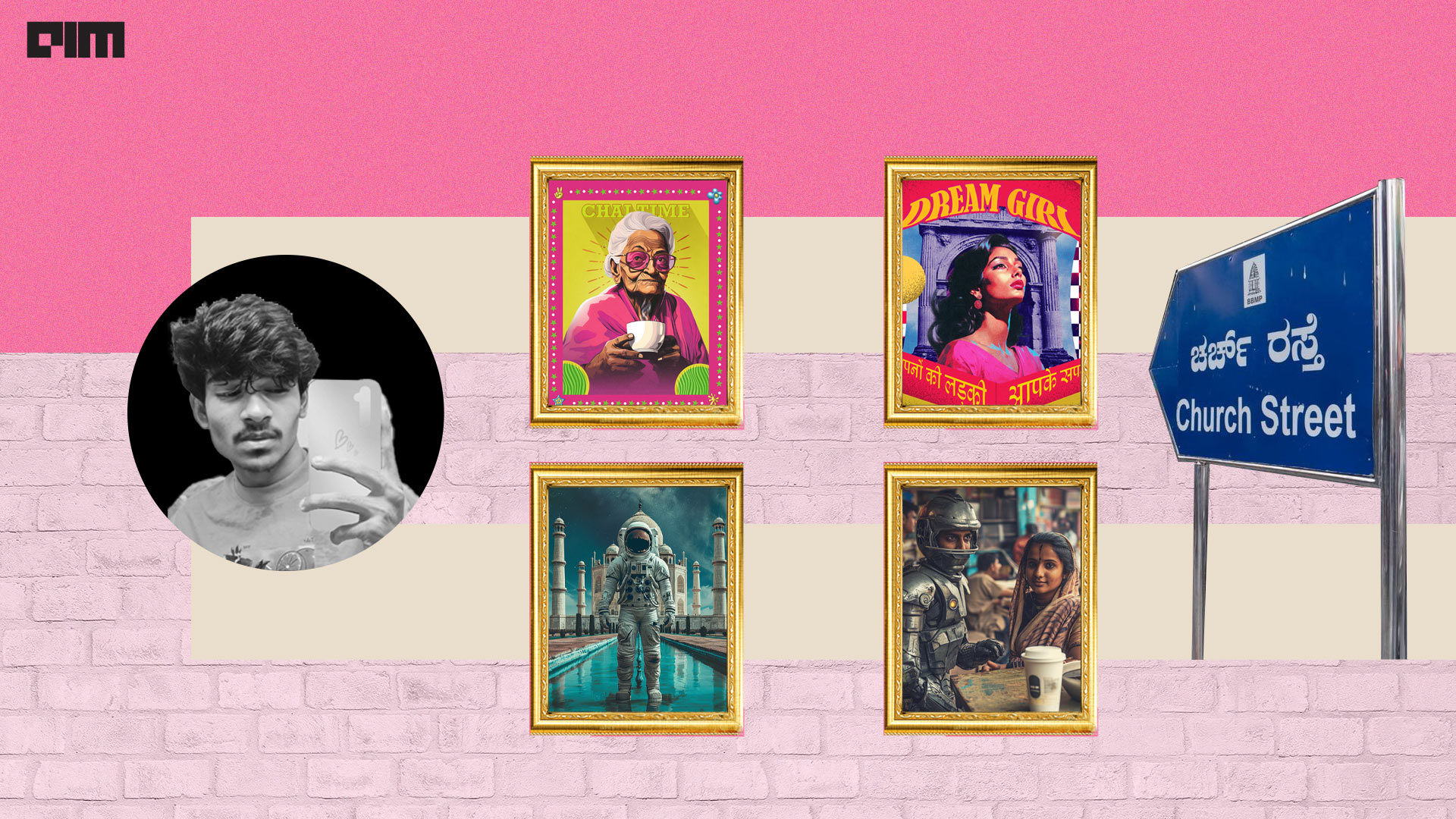“AI art is real art, and there’s no shying away from this statement,” declared a 19-year-old artist who faced criticism for selling AI-generated artwork on Church Street, Bengaluru.
Speaking to AIM, Ashok Reddy, a graphic designer at GrowthSchool, said, “It wasn’t a task I completed in one day; it was a collection of efforts over many months.” He emphasised that his images were original, generated from scratch, and not copied from any other creator or existing works.
Is AI Art Real Art?
The University of Plymouth argues that AI art cannot be termed original because AI generators use and merge pre-existing images to satisfy user commands.
Source: X
However, Reddy clarified, “These images are perfectly legal to generate and sell. If you visit any art store, you’ll see prints of famous works like the Mona Lisa everywhere. Similarly, platforms like Midjourney allow you to create original work that can be sold publicly.”
He further explained that the quality of the image depends on how you prompt the AI. According to Reddy, better prompts yield better images, and each generated image turns out unique. “Even if you use the same prompts, the AI will not produce an exact replica, ensuring each piece is distinct.”
AI Art Takes the Stage
AI art has become mainstream, as demonstrated by artists like Refik Anadol, a Turkish-American new media artist who merges art and AI to create captivating installations.
Anadol’s work includes transforming the Las Vegas Sphere into the world’s largest AI artwork and having his installation ‘Unsupervised’ displayed at MoMA in New York. His success stems from collaborations with hardware and software providers, using tools like NVIDIA Omniverse to handle vast data sets.
Other artists, like Sougwen Chung and Trevor Paglen, also explore AI in diverse ways, highlighting AI art’s potential beyond mere prompt engineering. This growing acceptance and exploration showcase the legitimacy and creativity inherent in AI-generated art.
Location Meets AI
On Church Street, Reddy managed to sell about 100 art pieces in just two days. He highlighted that even if visitors don’t make a purchase, they often appreciated the work and shared positive feedback.
“Although there are negative comments too, they often come from people who don’t know how to use AI and generate images properly. Those with a creative background understand the process and know how to use these tools effectively,” Reddy explained.
 Source: X
Source: X
During the G20 Summit in 2023, Mark Rutte, the Prime Minister of the Netherlands, visited India and made a pit stop at Church Street. He walked around interacting with locals and shopkeepers.
However, as the city’s creative community continues to flourish, securing a spot on Church Street to showcase their talent becomes a challenge for many aspiring artists.
Regarding his experience, Reddy said, “I went there four times but could only secure a spot on two occasions. Even if you’re the first to arrive, those who have been there for a couple of years will take your place by some means.”
“I believe apart from Church Street, another good place for creative people [in Bengaluru] would be Indiranagar or Cubbon Park,” he added.
AI Art: A Self-Learning Skill
At India’s premier AI conference, Cypher 2023, Biren Ghose, renowned for his work as the country head of animation leader Technicolor, spoke about the intersection of AI, simulation, and design. Ghose provided insights into a near- future where designers can swiftly transform their ideas into reality, reducing the time frame from days, months, or even years to mere minutes.
The journey of AI image generation began in 2015 with automated image captioning designed to assist individuals with vision impairments. This paved the way for more models capable of generating images from textual descriptions.
OpenAI’s DALL.E 3 played a pivotal role in advancing text-to-image generation, despite initial concerns regarding potential misuse.
The landscape became increasingly competitive with the emergence of open-source alternatives like DALL.E Mini. This resulted in a variety of AI image generators, mostly free, enhancing creative possibilities.
Reddy mentioned that he gathered all this knowledge solely through online resources, without attending any college courses. When it comes to the tools, he recommends MidJourney, further highlighting the inspiration and learning opportunities provided by platforms like Twitter and other online communities.
What’s Next?
Bengaluru has now become a focal point for AI discussions. While discussions flow unabated regarding AI-generated work being “stolen” and “lazy work”, residents are not shying away from embracing this technology like never before.
In March 2023, the city hosted its first art festival, exploring the fusion of AI and art to address the concerns around climate change. FutureFantastic, the three-day festival, aimed to bring together diverse groups of artists, technologies, activists, and tech enthusiasts to foster collaborative art initiatives driving social change.





